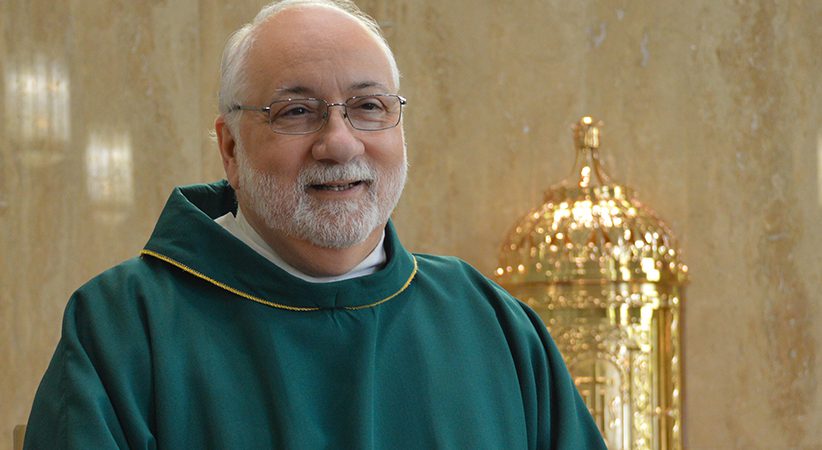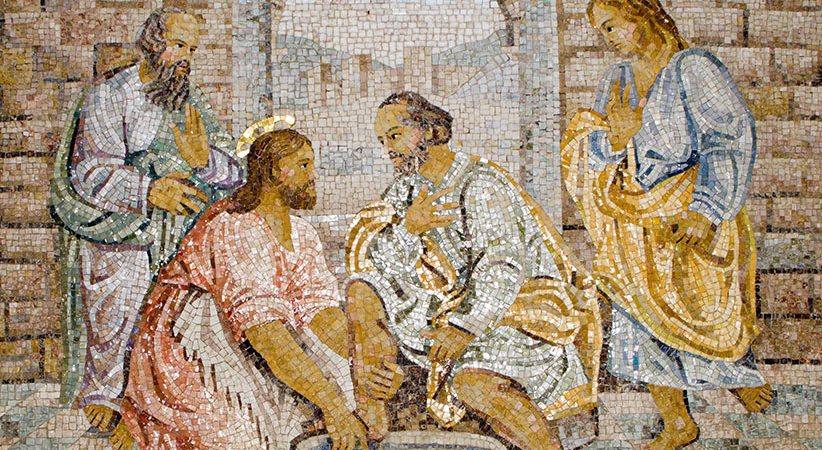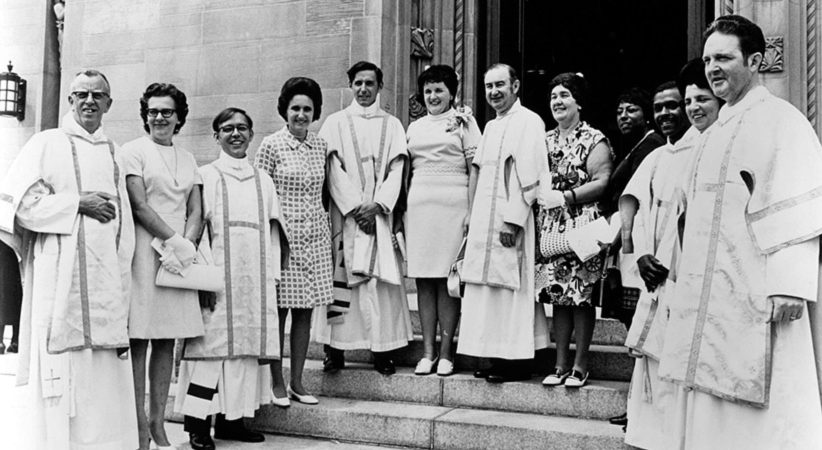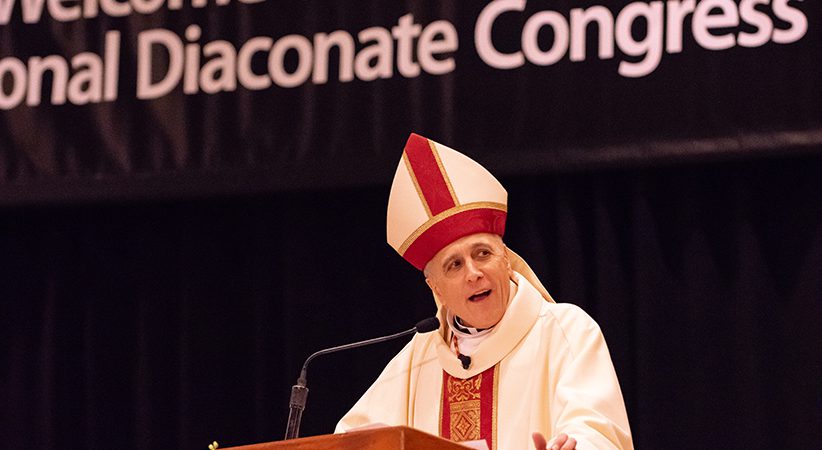The Ladder of the Spiritual Life
The step-by-step ascent between the human will and God’s grace
Father Daniel Dozier Comments Off on The Ladder of the Spiritual Life
In the Byzantine Divine Liturgy, the priest offers a prayer before the reading of the Gospel while the deacon is incensing the holy table and the faithful. In it, he prays, “Instill in us also the fear of Your blessed commandments, so that, having trampled all carnal passions, we may lead a spiritual life, both thinking and doing those things which are pleasing to You.” This goal of leading a spiritual life expresses well the primary objective of being in the Church and the overall mission of the local parish. A parish that builds up the spiritual lives of its parishioners in such a way that their thoughts and actions are pleasing to God is fulfilling a key dimension of its vocation as a faith-filled community.
But what does it mean for us to live a spiritual life? In the Byzantine Christian tradition, the image of a ladder is frequently used to help explain the path of ascent to God. The step-by-step ascent is seen as the fruit of a synergy (synergia) between the human will and the energies of God’s grace. The goal of this ascent is to draw closer to God and to grow in his likeness, which is charity itself. Typically there are three primary steps on this ladder: purification, illumination and deification.
Purification, or catharsis, is the beginning step on the ladder of the spiritual life. It is sometimes referred to as bodily prayer since attention is paid to both the words and the actions of praying and putting these prayers into action through the development of virtuous habits. This step of purification involves the disciplines of asceticism (askesis), or “exercises,” which are meant to strengthen the heart and mind in its orientation toward God and to be more detached from the Adamic passions — for example, power, possessions, pride, pleasure. These disciplines include regular verbal prayers, fasting, repentance and the corporal and spiritual works of mercy. Even if the prayers of the Church or of the saints are used, the intention is to pray these words as though they were our own, as St. Theophan the Recluse encourages us.
Illumination, or photismos, is the second step on the ladder of the spiritual life. As a soul becomes more and more purified in its orientation toward God, grace illumines the mind to be conscious, more and more throughout the day, of being in God’s holy presence. Without departing from the spiritual disciplines of the first step, which are foundational to every spiritual life — the practice of prayer and the virtues — this second step allows one to see the world with more spiritual eyes, to see all of creation in the light of God and God’s divine purposes. At this phase, there begins a paradoxical ascent by simultaneously descending from the mind into the heart where God is present through the energies of his grace and the indwelling Holy Trinity. The mind leaves behind fantasies and imaginations, and becomes more rooted in the presence of God, even during times of sleep. Here we might recall the words of the Song of Songs 5:2: “I was sleeping, but my heart was awake. / The sound of my lover knocking!” In this regard, one is no longer simply praying but is, in fact, gradually becoming a prayer.
Deification, or theosis, is the third and final step on the ladder of the spiritual life. While the first and second steps continue to be cultivated, the third step known as the prayer of tenderness develops where the person is carried more and more by the Spirit of God who is now praying within the person in the full union of mind, heart and grace in what is sometimes called noetic prayer, or prayer of the heart. Illumination is now almost perpetual, and one may experience the vision of the light of God’s presence and peace even in the most difficult of circumstances. Here the soul not only burns with the love of God but, in fact, becomes fire, as the Desert Fathers relate, burning with the fire of charity for God and neighbor. Like the Virgin Theotokos, the soul becomes a pneumatophore, or bearer of the Spirit of God, acquiring the Spirit of peace, which helps to lead others to God. It also simultaneously overflows with the affective gift of tears as one grows in the life and love of God.
In conclusion, it is important to note that while these three steps have a beginning, they have no end, as St. Theophan the Recluse observes: “Growth in prayer has no end, and if this growth ceases, it means that life ceases.” May we cultivate a truly spiritual life in ourselves and others.
FATHER DANIEL DOZIER is co-founder and chief learning officer for The Center for InMinistry Development and an associate professor of Scripture and Catholic leadership, www.inministrydevelopment.com.





